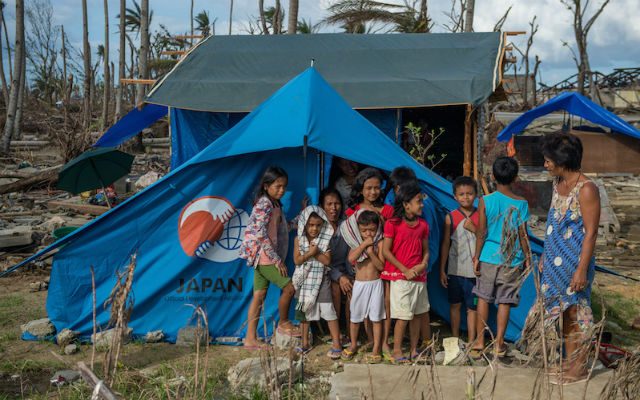SUMMARY
This is AI generated summarization, which may have errors. For context, always refer to the full article.
 Poverty and natural disasters are intertwined. Both, however, can be addressed together through the community-driven development (CDD) approach to disaster preparedness, as we have learned in the Philippines.
Poverty and natural disasters are intertwined. Both, however, can be addressed together through the community-driven development (CDD) approach to disaster preparedness, as we have learned in the Philippines.
CDD aims to empower local communities with the ability to self-govern, analyze their situation, and conceptualize and prioritize projects based on their needs such as school buildings, health stations, access roads, water supply systems, post-harvesting facilities, and footbridges. Residents are the prime driver for implementing and maintaining these community structures.
Disasters shock the financial, health, and mental status of those affected through loss of human lives, livelihoods, capital and assets, or a rise in the price of staple foods. Disasters often affect large numbers of households at the same time, thereby diminishing their access to informal networks as a coping mechanism – in particular support from family members, friends, and neighbors. Survivors then naturally expect the government to respond to their immediate needs.
The Philippines is one of Asia’s most disaster-prone countries, and each year it gets battered by around 20 typhoons. In November 2013, Super Typhoon Yolanda (Haiyan), one of the strongest ever recorded, hit some of the poorest provinces in the central Philippines, resulting in over 6,000 deaths and 16 million people losing their homes, their livelihood, or both.
Haiyan’s devastating impacts were not only economic and physical, but also mental and emotional. Many typhoon victims felt disempowered, helpless, and hopeless.
But some communities were more capable to respond to post-disaster efforts than others. Empowered communities with established decision-making and resource-allocation processes can urgently and effectively respond to disasters, as was demonstrated during the reconstruction and recovery phase in communities with the CDD experience.
Lessons from Yolanda
In the wake of Yolanda, ADB approved a $372.1 million emergency assistance loan to help the government implement the KALAHI-CIDSS National Community-Driven Development Project. Established in 2003 and now the country’s most ambitious CDD program, KALAHI-CIDSS also complements the supply side gap for beneficiaries of the government’s Pantawid Pamilyang Pilipino cash transfer program. For instance, in Tanauan, Leyte, one of the hardest-hit areas, some KALAHI-CIDSS projects supported the construction of school buildings and health stations now serving about 2,845 Pantawid Pamilya Pilipino households.

The public social support system in the typhoon-affected provinces greatly helped the victims, according to Department of Social Welfare and Development (DSWD) Secretary Corazon Soliman. The department was able to mobilize its KALAHI-CIDSS municipal field staff to undertake rapid damage assessment immediately after the storm.
DSWD was also able to roll out emergency cash-for-work and cash-for-asset rebuilding programs by using the same household targeting system as the conditional cash transfers. This helped identify the most vulnerable people in need of urgent aid.
As part of its reconstruction efforts, the Philippine government decided to use KALAHI-CIDSS’s implementation structure and established delivery mechanism to help reconstruct community infrastructure affected by the typhoon. ADB’s support directly benefits 847 municipalities, 554 of which were heavily affected by the typhoon. The implementation preparation is ongoing to construct more than 1,600 community-driven projects in typhoon-affected areas.
Strengthening local resilience requires engaging the community to better understand the experience of disaster impact and adaptation, as well as providing interventions tailored to the specific local context and underlying causes of vulnerability. CDD is ideally suited to these interventions by engaging communities in decision-making based on specific local conditions.
It also helps sustain the interventions through strong ownership of community-based adaptation strategies, and strengthen resilience by taking forward CDD projects approved by the local population.
CDD therefore truly has a role to play in effective disaster response. – Rappler.com
Yukiko Ito promotes the implementation of ADB’s social development agenda through her work on community-driven development, social analysis, and social protection. She also serves as the Secretariat of the ADB-wide Social Development Thematic Group. Prior to joining ADB, she was involved in projects that dealt with social protection reform, conditional cash transfers, and community-driven development in the Philippines, and basic education and early childhood development in the East Caribbean countries.
This blog was originally published in the Asian Development Blog.
Add a comment
How does this make you feel?
There are no comments yet. Add your comment to start the conversation.